The Intel SSD 320 Review: 25nm G3 is Finally Here
by Anand Lal Shimpi on March 28, 2011 11:08 AM EST- Posted in
- IT Computing
- Storage
- SSDs
- Intel
- Intel SSD 320
It's called the Intel SSD 320, but the part number should give away just what we're looking at here:
This is the long awaited third generation Intel based SSD. This is the G3. And at this point it's around 6 months late.
Back then it was simply called the Postville Refresh on Intel's roadmaps (Postville was the 34nm Intel X25-M G2). It would use 25nm Intel NAND, feature improved performance and full disk encryption - all behind a 3Gbps SATA interface.
When I spoke with Intel about the drive last year, all indications pointed to it being faster than drives based on SandForce's SF-1200 controller. And it is:
| Intel SSD 320 300GB vs. Corsair Force F120 | ||||
| AT Storage Bench 2011 (Heavy) | AT Storage Bench 2011 (Light) | |||
| Corsair Force F120 | 120.1 MB/s | 155.9 MB/s | ||
| Intel SSD 320 300GB | 132.8 MB/s | 161.7 MB/s | ||
Without turning to any real time compression/deduplication techniques, Intel has built a drive that's faster than the SF-1200. You also get that famed Intel SSD reliability:
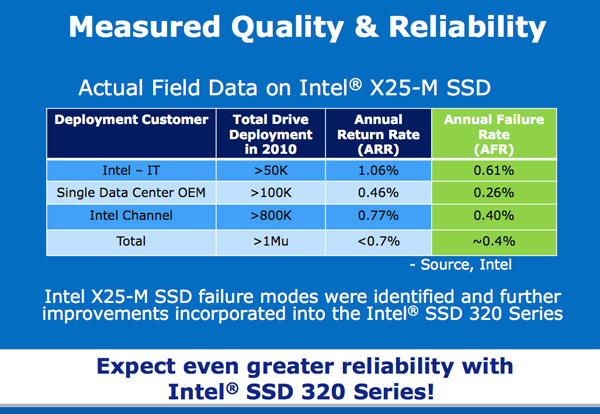
There's just one issue. The SF-1200 was the king of 2010. This year is shaping up to be all about the SF-2200 and the G3 isn't quite as competitive there. Intel realized this as well and thus we got the Intel SSD 510 to address the high performance market. Intel claims the 510 should have the same failure rate as the 34nm X25-M G2 at ~0.6% per year.
The Intel SSD 320 by comparison is aimed at the mainstream market. Remember that's what the M in X25-M always stood for to begin with. As a result we get lower pricing:
| Intel SSD Comparison | ||||||||||||
| X25-M G2 160GB | Intel SSD 320 40GB | Intel SSD 320 80GB | Intel SSD 320 120GB | Intel SSD 320 160GB | Intel SSD 320 300GB | Intel SSD 320 600GB | SSD 510 120GB | SSD 510 250GB | ||||
| User Capacity | 149GB | 37GB | 74GB | 111GB | 149GB | 279GB | 558GB | 111GB | 232GB | |||
| Random Read Performance | Up to 35K IOPS | Up to 30K IOPS | Up to 38K IOPS | Up to 38K IOPS | Up to 39K IOPS | Up to 39.5K IOPS | Up to 39.5K IOPS | Up to 20K IOPS | Up to 20K IOPS | |||
| Random Write Performance | Up to 8.6K IOPS | Up to 3.7K IOPS | Up to 10K IOPS | Up to 14K IOPS | Up to 21K IOPS | Up to 23K IOPS | Up to 23K IOPS | Up to 8K IOPS | Up to 8K IOPS | |||
| Sequential Read Performance | Up to 250MB/s | Up to 200MB/s | Up to 270MB/s | Up to 400MB/s (6Gbps) | Up to 500MB/s (6Gbps) | |||||||
| Sequential Write Performance | Up to 100MB/s | Up to 45MB/s | Up to 90MB/s | Up to 130MB/s | Up to 165MB/s | Up to 205MB/s | Up to 220MB/s | Up to 210MB/s (6Gbps) | Up to 315MB/s (6Gbps) | |||
| Price | $404 | $89 | $159 | $209 | $289 | $529 | $1069 | $284 | $584 | |||
It's still early in the 25nm ramp, but the 25nm Intel SSD 320 is cheaper than the 34nm Intel SSD 510. The only issue is that OCZ is very competitive with its pricing as well and compared to the Vertex 2, Intel's SSD 320 isn't really any cheaper. Intel likes to maintain its 65% profit margins so even though it makes the NAND and the controller in the 320, we're unlikely to see these drives drop below competitive pricing.
Intel expects the 25nm SSD 320 to be even more reliable than the 510 or X25-M.
The Same Controller
The Intel SSD 320, like the 310 and X25-M before it, uses an Intel branded controller. Opening up the 320 reveals a near identical controller to what we saw in the 34nm X25-M G2 housing:
You'll notice the part number is identical to 2009's X25-M G2 controller. In fact, it's the same controller. Apparently the G2 controller had a number of features on-die, but not implemented in firmware. Things like full disk encryption and NAND redundancy never made it out in G2 but are here in the 320 all thanks to new firmware. And no, G2 owners aren't getting it.
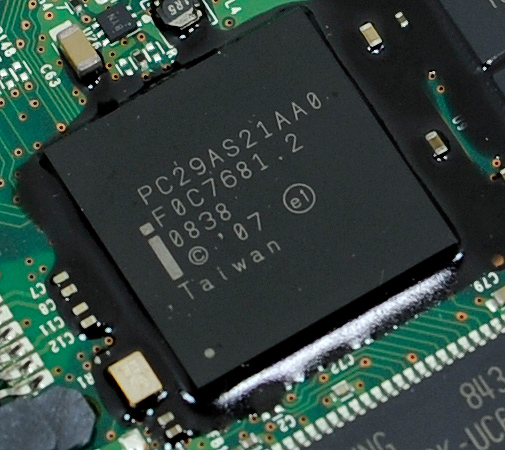
Intel's X25-M G1 Controller
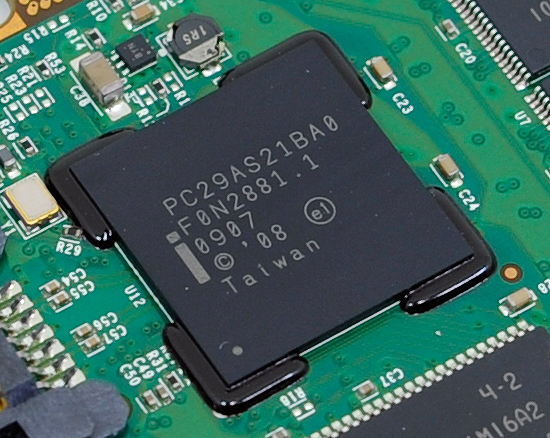
Intel's X25-M G2 Controller
Since the controller hasn't changed, the basic architecture of the SSD hasn't changed either. Intel still doesn't store any user data in its external DRAM cache and there's still a 256KB on-die SRAM.
Next to the Intel controller is a 64MB 166MHz SDRAM device, now made by Hynix. You'll notice that the DRAM chip is a lot smaller than what we've seen in previous X25-M generations, despite growing in capacity. Intel actually turned to mobile SDRAM for use in the SSD 320 to help save on power. While the X25-M G1 and G2 both used a conventional 3.3V SDRAM device, Intel moved to a 1.8V mobile SDRAM chip with the 320.
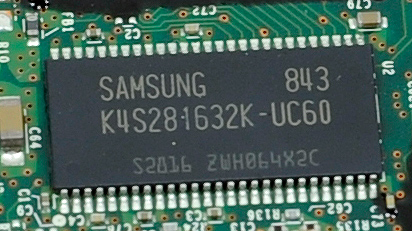
Intel X25-M G1: 16MB 166MHz SDRAM
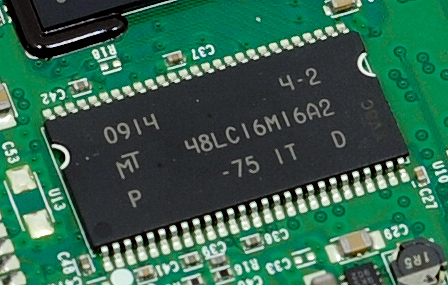
Intel X25-M G2: 32MB 133MHz SDRAM
Intel always prided itself on not storing any user data in its DRAM cache. The external DRAM is only used to cache mapping tables and serve as the controller's scratchpad. In the event of a sudden loss of power, Intel only has to commit whatever data it has in its SRAM to NAND. To minimize the amount of data loss in the event of a sudden power failure, Intel outfitted the SSD 320 with an array of six 470µF capacitors in parallel.
We've seen large capacitors on SSDs before, primarily the enterprise SandForce drives that boast a 0.09F supercap. Intel claims that for its design a single large capacitor isn't necessary given the minimal amount of data that's cached. It further claims that an array of multiple capacitors in parallel allows for much better reliability - if one capacitor fails the array is still useful (vs. a single point of failure in the case of the supercap).



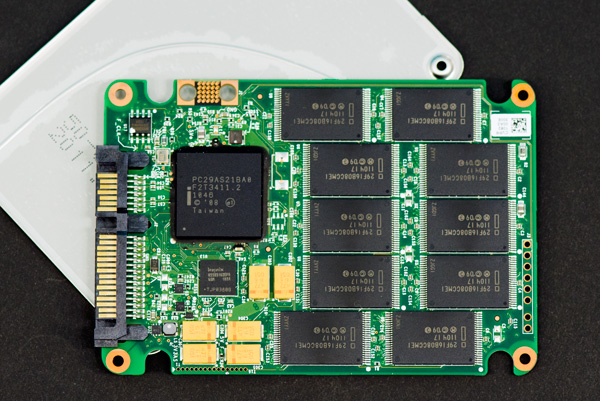
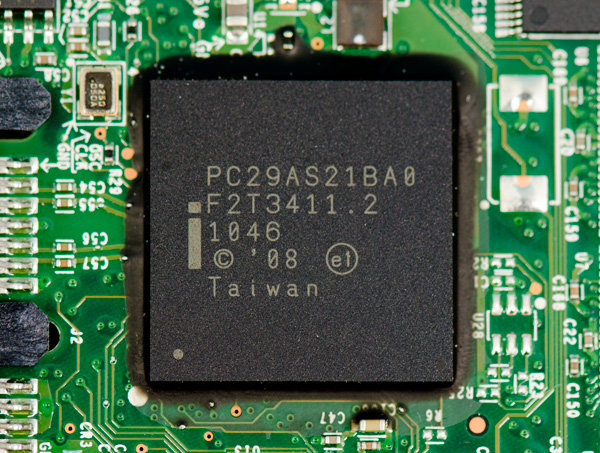
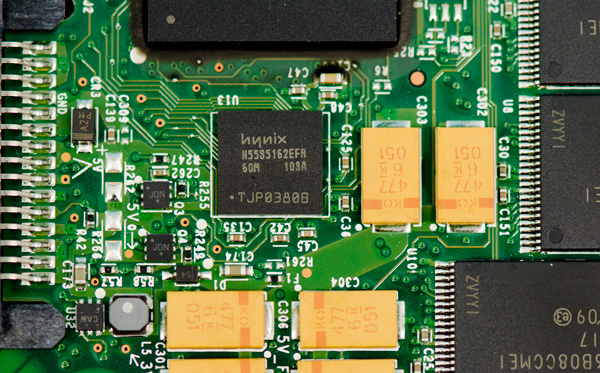









194 Comments
View All Comments
sean.crees - Tuesday, March 29, 2011 - link
Have you thought that perhaps the new change was in your best interest? That maybe their trying to fix a problem before you notice it.Think about it, as a company, you would want to give your customers what they want. You'd give them all the space they'd want, i mean why not right? You'd want all the biggest numbers possible to slap on your box so you can brag to the entire market your the best. Then the only reason to make it less is to pre-emptively keep a potential problem from happening.
You have to remember, OCZ isn't Intel, they don't make these parts. They just put it together and repackage it. If their Nand suppliers suddenly have issues, they can't just stop selling products, they would go bankrupt, but a slight change in product specs that most people will never notice in real world usage to prevent future issues because of hardware supply problems?
I'm not saying this is what happened, but it is just one of many possible reasons why the change was made.
OCZ doesn't have intels Q&A because they can't afford it. What would you prefer, having only Intel SSD's because no one else can afford to be competative with them in this market and have the same Q&A and parts. Or some competition with some sacrifices? Most would agree this is the lesser of two evils.
But what OCZ lacks in funding they make up in customer support. You can go to their forums, make a post and within a reasonable amount of time get an actual tech from their company to respond to you with options to fix your problem. You don't get that personal touch from Intel. With Intel, if it's not in the box when you buy it, then you don't get it.
jwilliams4200 - Wednesday, March 30, 2011 - link
Lowering the performance of the product, and giving 5GB less space than advertised (or using lower tier flash memory) is NOT in the best interest of the customer. It was in OCZ's best interest to try to deceive their customers so OCZ could increase its profits, so that is what OCZ did.sean.crees - Wednesday, March 30, 2011 - link
And you have proof they intentionally used sub standard nand to increase profits? Or are you just making stuff up?jwilliams4200 - Wednesday, March 30, 2011 - link
OCZ has been using flash chips in some SSDs that have the Micron logo and then the SpecTek logo stamped on top. SpecTek sells flash chips that Micron will not sell. SpecTek is a lower tier.Making things up? Hardly. This has been discussed at length in a number of forums, and you can easily find credible pictures of the flash chips in OCZ SSDs from people who opened up the SSDs.
Ema Nymton - Tuesday, April 5, 2011 - link
Funny you say that,I just had the same discussion with a friend of mine.
Then I went with a OCZ deneva and opened it.
Guest what I found Intel Nan flash in it...
sean.crees - Tuesday, March 29, 2011 - link
Intel had the reliability vs speed in the 1st and 2nd gen SSD's, but the difference then was that the speed was competitive. It's not even close this time.Another thing i have against Intel, i was one of their early 1st gen adopters, 2x 80gb drives for $500 a pop. I'm the guy Intel screwed out of TRIM support because they didn't feel like sharing a firmware update that enables it for me. So i still have a bitter taste in my mouth over that, especially now that its been a few years and my 1st gen SSD's are starting to feel more like a fast HDD. :*(
Also, Sandforce and OCZ seem to have learned how important stability and performance sustainability are in this market. They have some of the best garbage collection without TRIM available. That's important especially for people considering OS's that don't support TRIM, or for RAID usage.
Intel may have created this market, but its competitors have learned the lessons Intel shared while Intel still needs to learn how to support its existing customer base like OCZ has gotten very good at. This is the problem with being #1 for too long, you begin to think you can do no wrong, and all your choices are the right ones that everyone else should conform to. This is fine as long as you keep your competitive edge, but once you lose that, you risk losing everything.
Intel may be able to brag about stability for now, but i have a feeling as time goes by people will realize that Sandforce drives are just as stable, and then Intel loses its only Ace left in it's hand.
jwilliams4200 - Tuesday, March 29, 2011 - link
You sound like an OCZ spin doctor.No, the Sandforce garbage collection is not one of the best. It is actually highly flawed. If you use the drive heavily, the write speed will drop, and it will stay low, even after TRIM, for up to a week. And Sandforce has done nothing to fix this. OCZ, in typical con-man fashion, claims it is a feature, but that is obviously a lie. If it were a feature, it would be documented under what circumstances it happens, how much the write speed decreases, and for how long. The write speed would drop more, too, since 30% drop in write speed is not going to do much to save the flash, even if the flash were really in danger, which it should not be. And if it were a feature, Sandforce would offer the ability to turn it off, if not by the user, at least by the vendor. No, it is a design flaw.
Even if OCZ users do not get deceived by OCZ in the future (by OCZ changing the internals to make the drive less reliable or perform worse), it is obvious that Intel will remain more reliable and stable than OCZ. There is just no comparison between the quality control and testing that happens at Intel, as an entire corporate culture, in contrast to OCZ, where the corporate culture is to take short-cuts, use the cheapest parts possible, lie to the customers whenever they feel like it, and then send the spin doctors out on the forums to attempt damage control. Ever since the OCZ spin doctors pretended to be users on hardforum years ago, it has been clear what sort of company OCZ is.
Acrono - Tuesday, March 29, 2011 - link
You sound like an Intel spin doctor.jwilliams4200 - Tuesday, March 29, 2011 - link
I have no association with Intel, other than appreciating their reliability. But of course there is no way for you to know that. The difference is that OCZ has a history of having their people post on forums, posing as non-OCZ "regular people". Intel has no such shady history.sean.crees - Tuesday, March 29, 2011 - link
I've actually never owned an OCZ product ever. But i keep up with how different companies in the IT domain behave. I read reviews, and keep up with trends."If you use the drive heavily", which the average consumer won't ever do. If you are going to be using this drive heavily then your making the mistake of buying a consumer product instead of a server product. You get what you pay for. Don't blame the company because your trying to use a product for a purpose it was never intended to be used for.
It is not the culture of Intel that gives them better quality control, its capital. Intel has a lot more resources available than OCZ. It can afford these premium parts, and better quality control.
Intel has good reliabilty, and if reliability is your #1 concern over all else, then your right, there is no other option. But most are willing to gamble that they will likely never see that increased reliability with intel, but will notice an increased speed with sandforce.